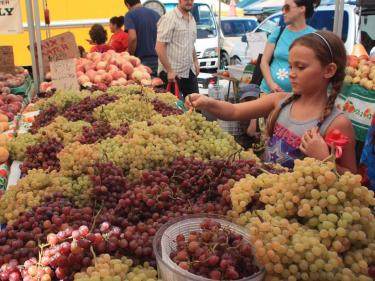What's Organic All About, Anyway?
 Many of us try to buy (and pay a premium for) organic food whenever possible, since it promises to be more healthy than the conventionally grown varieties. But what exactly does “organic” really mean? Many products bear the USDA organic seal, which has been in use since 2002. USDA regulations for organic production
Many of us try to buy (and pay a premium for) organic food whenever possible, since it promises to be more healthy than the conventionally grown varieties. But what exactly does “organic” really mean? Many products bear the USDA organic seal, which has been in use since 2002. USDA regulations for organic production
- prohibit the use of irradiation, sewage sludge, or genetically modified organisms
- reflect National Organic Standards Board (NOSB) recommendations for allowed synthetic and prohibited natural substances
- prohibit antibiotics in meat and poultry
- require 100% organic feed for livestock
The USDA label can be used on products that are at least 95% organic (excluding water and salt). Food items that are made with organic materials (at least 70%) may not display the seal but may state “made with organic” followed by up to three ingredients. Products with less than 70% organic ingredients may only list organic ingredients on the ingredients list.
Organic farmers and food producers must be certified by one of 95 US and international certifying agencies. You’ve probably seen their names on the labels of food, i.e. “Certified organic by Oregon Tilth”. Small farmers earning less than $5,000 a year do not have to undergo certification, but can’t use the USDA organic label and do need to submit records to the USDA if audited.
The cost for organic certification can be prohibitively expensive for many small farmers, and an alternative certification program, Certified Naturally Grown, offers a lower-cost, non-profit alternative adhering to similar organic standards.
Of course, the subject of organic food and standards is a huge one, and too large to cover fully here. Here are some online resources for more information:





